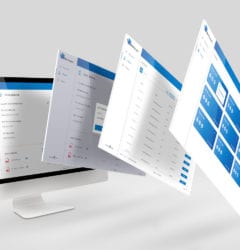11 Apr

Believe it or not, adopting new software applications can be challenging, even at a software development company. Just like anything else, establishing new habits can be difficult. So we compiled a list of the Top Ten Tips for Adopting New Tech in Your Office.
- Do your research – There are many applications available for accomplishing the same task. Research the products before committing. Most companies offer free demos and consultations. Take advantage of these opportunities to learn more and test the software yourself before rolling it out companywide. Your employees will not be eager to adopt a new application this week if they know there will be a new “solution” next week.
- Messaging, messaging, messaging – No one wants to be given an extra box to tick each day when it hasn’t been explained why. In a world where many employers are insistent on tracking every movement of their employees, your staff would be right to presume nefarious intentions toward anything deemed to “increase productivity.” Don’t allow yourself to come across as “Big Brother,” instead, explain to your employees how this product will make their life easier, thus increasing productivity.
- Train or Demonstrate – No implementation will be successful without a demonstration or training on the product. Don’t assume all of your employees have the same level of computer knowledge as you. Your staff will not use something they don’t understand. Forcing them to stumble through the use of the product will lead to more significant frustration.
- Look for quality UI/UX – Try to find appealing software applications that work as expected and are easy on the eyes. Avoid a product that allows a seemingly familiar appearance to do unfamiliar things. Functions have become pretty standard across applications, so don’t force your employees to learn on a reinvented wheel. There is a reason developers spend millions of dollars on user interface and experience — it makes the product more enjoyable in practice.
- Is it necessary? – If you can’t answer with a definitive yes to this question, you probably shouldn’t move forward with implementation. Adding an unnecessary layer to the day-to-day duties of your employees will do nothing but aggravate them. There is nothing worse than engaging in pointless objectives when you’re busy with things that actually matter. Only implement software applications that serve your business’ actual and necessary purpose.
- Make sure it fits your budget – If you select software that stretches your budget to the limits, you will find any reason to discontinue use. Instead of the application providing a solution, you will spend your time searching for a problem allowing you to cancel your subscription to this burden.
- Keep it simple – Sure, it’s nice to have an application that allows you to make coffee and send birthday cards to your grandma with the touch of a button, but is that what your office really needs? Don’t get duped into buying something with endless, unnecessary bells and whistles. Doing so creates confusion and provides more opportunities for something to go wrong.
- Don’t sacrifice human connection – There is a reason “water cooler talk” became an office staple and part of the vernacular; people like to talk to other people. While messaging applications and email have become necessary tools, they can’t replace actual human interaction. Humans are social by nature, and exchanges in the workplace provide enumerable benefits to morale. Your employees will want to come to work if they are invested in those they work with.
- Have a rollout plan – Take the time to determine precisely how you will roll out a new application. If you fumble the rollout, the perfect application will provide anything but perfect results. Try rolling out a new product when your employees aren’t trying to keep their heads above water, and be deliberate about what you’re doing and why you’re doing it. It might not be the best time to throw an extra cog in the machine if you are in the midst of a busy season.
- Be willing to pivot – As much as you should avoid switching between applications, your employees also need to know you will pivot if necessary. Telling your employees that you’re going to continue using something that provides no benefits because you paid for it or you’re too proud to admit you were wrong won’t go over well. If your staff is going to try something new, they will want to know you won’t become beholden to something that makes their work more difficult or monotonous.




Recent Comments